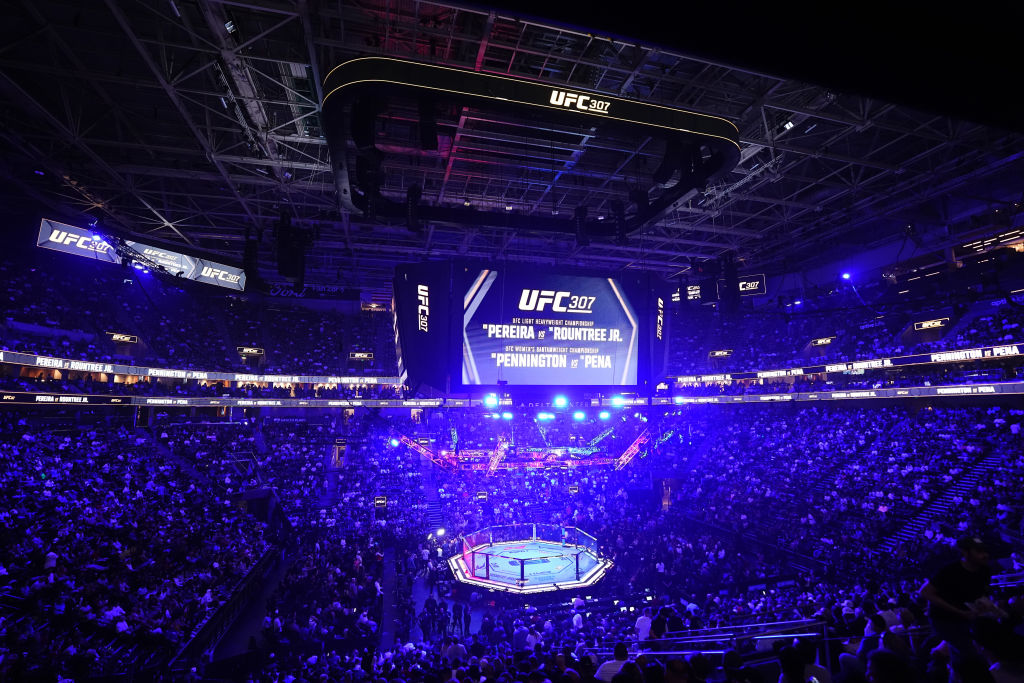
If you have even a passive interest in sports, professional fighting, or mixed martial arts, you’re undoubtedly aware of the UFC, which shattered records in 2023 as the largest MMA promotion in the world. The entity, whose title is short for Ultimate Fighting Championship, is one of the largest subsidiaries of Endeavor Group Holdings, which owns such massive companies as the Asylum Entertainment Group, TKO Group Holdings, and Professional Bull Riders. As of 2024, the UFC has ballooned its market capital to record highs, and run more than 700 events worldwide. According to BetMGM, the UFC is currently valued at a net worth of over $12 billion, with expectations to continue growing as the years carry on.
Given that the outlet is so successful, it only makes sense that we perform a deep dive into the history and financial security of the business. Any entity which balloons from a humble MMA showcase to a multi-billion industry in the span of just 30 years is absolutely worth studying. So, without any further preamble, let’s jump right in, and see what we can learn about the massive and unparalleled success of the UFC.
Creation And Early Concepts
Long before the UFC was the massive global business that we all know and love, the company began as a simple single-elimination MMA tournament. These single-elimination events, which brought together fighters of numerous individual fighting styles and cultural backgrounds, were set to be videotaped and distributed to pay-per-view producers under the promise of future events drawing large crowds. The idea for the no-holds-barred combat sessions was initially proposed by marketing executive Art Davie in 1993, while in discussion with filmmaker John Milius and Jiu-Jitsu grand master Rorion Gracie. After formulating a loose business plan, the trio pitched the initiative to a group of potential investors, and managed to launch WOW Promotions, which later grew to become the Ultimate Fighting Championship.
Semaphore Entertainment Group was the first major television entity to partner with the UFC, envisioning the pay-per-view matches as a dangerous and borderline lawless alternative to professional boxing. The matches were even pitched as a real-life alternative to popular fighting video games such as “Mortal Kombat,” with a number of patently dangerous and off-the-walls production ideas. These concepts included placing men in a ring surrounded by electrified fencing, razor-wire ropes, or a moat with alligators, which would surely have left any and all insurance providers foaming at the mouth with frustration. Obviously, these ideas were nixed for being over-the-top dangerous, though the sessions which spawned these constructions resulted in the UFC’s trademark ring design, the Octagon.
UFC 1 And Franchise Potential
In November 1993, the UFC launched its first official live event, at the McNichols Sports Arena in Denver, Colorado. This event has retroactively been titled UFC 1, and featured a host of interesting line-ups built out from hypothetical questions like “Who would win, a wrestler or a boxer?” The UFC 1 event saw numerous warriors from different disciplines facing off, with no rules dictating weight class, experience, or banned moves of any kind. Viewers were quickly enticed to join in, mostly out of morbid curiosity, and the event eventually kicked off with over 86,000 television subscribers. In the years since the UFC’s success, many professional event organizers have likened UFC 1 to a series of illegal street brawls or banned websites such as LiveLeak.
While speaking on the history of the organization, current UFC president Dana White explained that UFC 1 was never intended to spark the creation of an empire, and was in fact designed to be a one-time thing. In a 2007 interview with How Stuff Works, the CEO explained “That show was only supposed to be a one-off. Well, it did so well on pay-per-view they decided to do another, and another. Never in a million years did these guys think they were creating a sport.” Shortly after the event concluded, WOW Promotions and SEG execs met to discuss plans for franchise potential, and eventually struck a five-year joint development deal which saw the UFC expanding into numerous events throughout the late 1990s.
Late 1990s And Added Restrictions
Despite the initial design of the UFC necessitating a no-rules street fight in the ring, the business was eventually forced to comply with additional restrictions as they ventured beyond UFC 1. Initial restrictions included stricter time limits for match length, mandatory glove use, and bans on hair pulling and head kicks to downed opponents. This was only the beginning, however, as the sport had already garnered a sour reputation as being barbaric and dangerously violent. Then-Arizona Senator and future presidential hopeful John McCain referred to the league as “human cockfighting” in an infamous 1996 condemnation of the UFC. During his speech, McCain called on governors of all 50 U.S. states to ban the sport, forcing execs behind the organization to continue softening the reputation of their coveted events.
By the time the UFC had concluded bulking up their ever-growing rule book to appease McCain and his constituents, they had banned fish-hooking, headbutting, groin strikes, and a number of other major factors which separated the no-holds-barred fights from those seen in standard boxing rings. While some were frustrated by the perceived neutering of the extreme sport, others saw the potential that these changes had to make the UFC a household name. During this time, matchmaker Joe Silva worked tirelessly alongside then-commissioner Jeff Blatnick and referee John McCarthy to establish a lengthy rule book for fighters, which still exists in a highly revised form to this very day.
Acquisition And Appointing Of Dana White
Despite the newfound success wrought from the unified rules of the UFC, the business model was still seeing major financial problems during the turn of the century. In 2001, a pair of casino owners with connections to the Nevada State Athletic Commission named Frank and Lorenzo Fertitta offered to purchase the brand for the price of $2 million. Upon acquiring the entity, the Fertittas placed their business partner Dana White in charge of the organization. White continues to serve as president and CEO of the UFC to this very day, and is largely credited with building the brand into the successful multi-billion dollar venture that it has become.
The Fertittas’ connections with the NSAC allowed them to pull some strings which got the UFC back on pay-per-view, and in front of millions of new fans in the city of Las Vegas, Nevada. They also had access to much better advertising outlets, allowing them to expand knowledge of the brand to a much wider audience of potential fans. Before long, the UFC was a bustling business, packing out venues like the Trump Taj Mahal, MGM Grand Garden Arena, and eventually their own facility titled the UFC Apex, which opened in 2019. Over the years, the UFC has continued growing bigger and bigger, and has even acquired numerous other professional fighting operations, expanding their dominion exponentially in the years since White and the Fertittas came aboard.
ESPN Deal
One of the most impactful deals of the UFC’s decades-long run was their 2018 partnership agreement with Disney and ESPN. The contract, which offered a guaranteed partnership for 5 years, was valued at over $300 million annually, and offers streaming rights to UFC events through outlets like ESPN and ESPN+. This allowed fans of the organization to purchase specific UFC Fight Pass subscriptions directly through their ESPN+ provider, for full access to new and existing UFC events. Dana White extended the contract by 2 years shortly after the deal was signed, and the partnership has almost certainly strengthened with time, as each media conglomerate has continued taking in billions in revenue.
Future Of The UFC
While the UFC has continued to see many controversies in the past 20 years, the business has been mostly unaffected on a grand scale. For now, it seems as though the global phenomenon is destined to continue finding major success, as UFC fights and other events have become the talk of the town. With an estimated net worth of over $12 billion, the league is in a better place today than it ever has been. As far as any investor or economist can tell, there’s no controversy strong enough to get fans to stop tuning in, no matter who decries that the so-called “human cockfights” are barbaric and overly violent.




